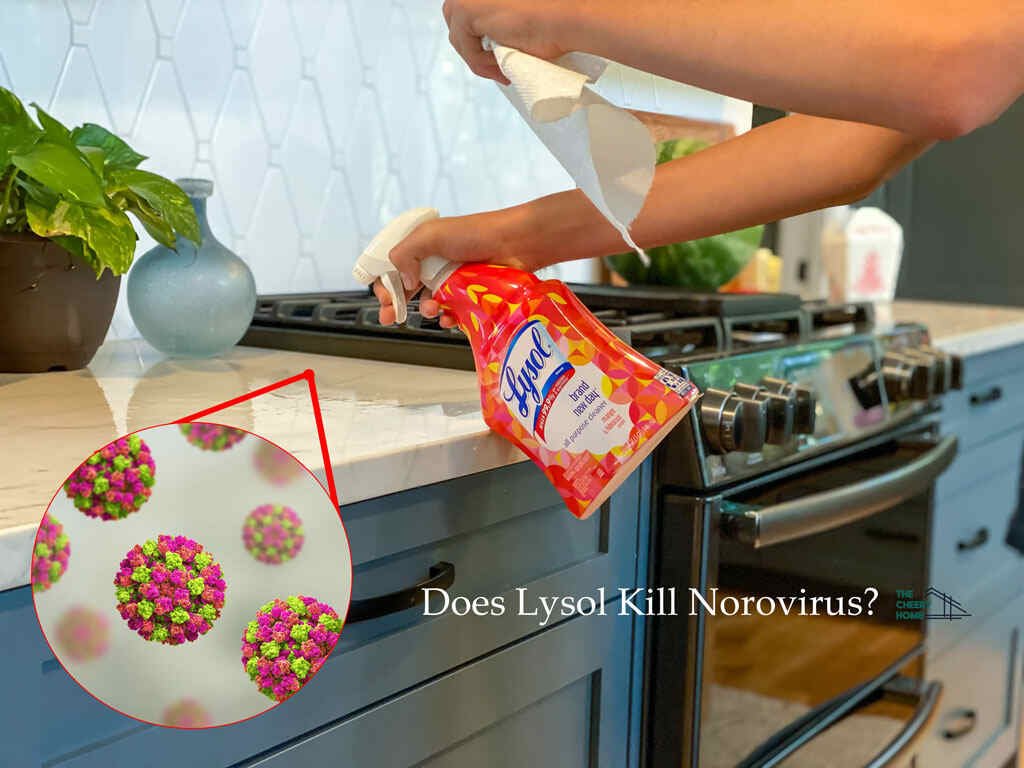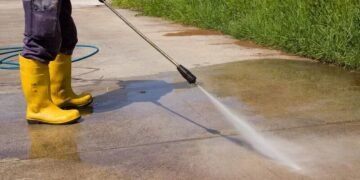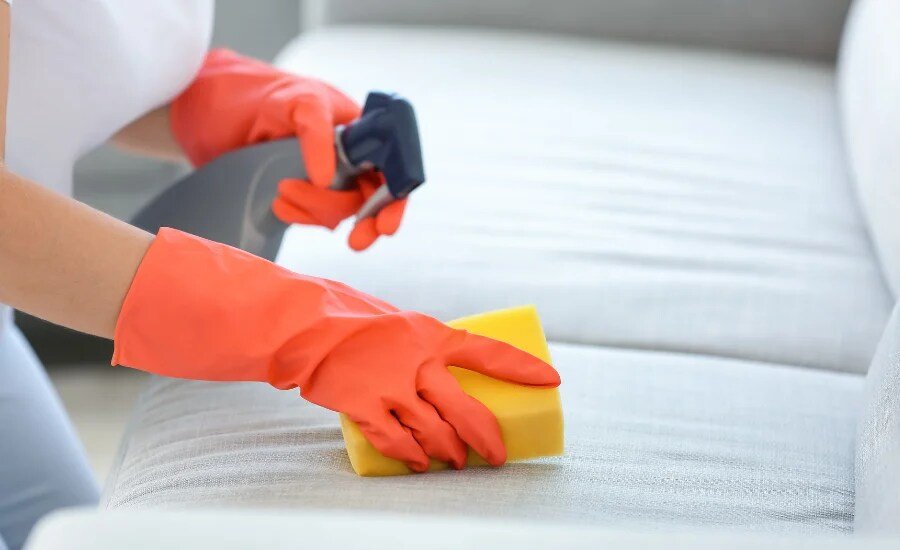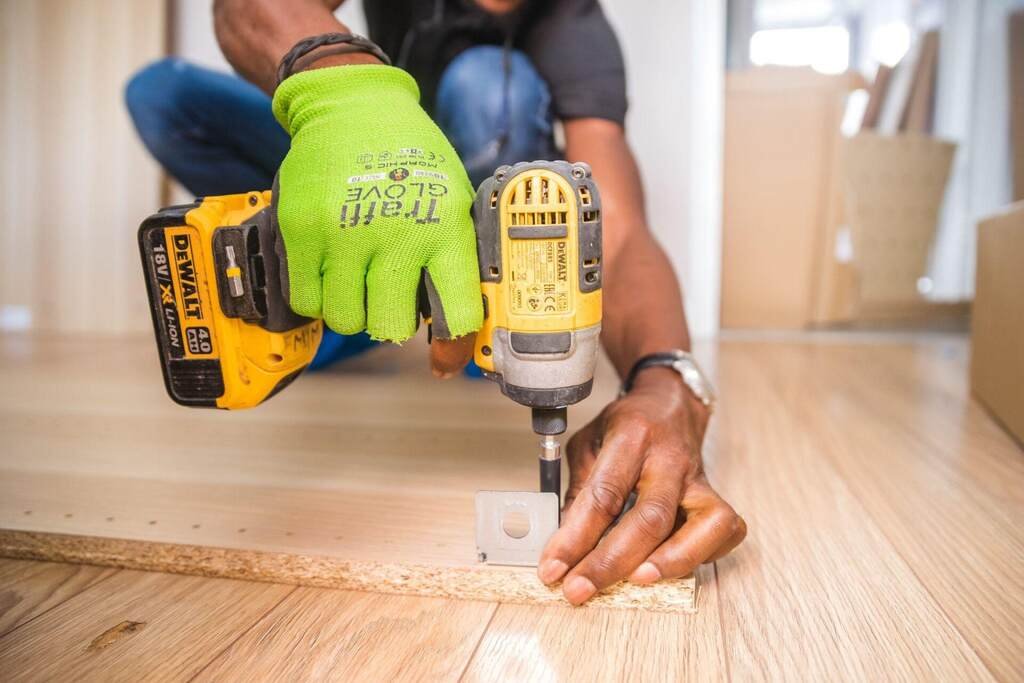Keeping your home clean and healthy is one of the important tasks in everyday life chores. For these tasks, many homeowners depend on the disinfect products such as Lysol and many more. Such products are specially used against stomach virus. So, does lysol kill norovirus?
The United States Environmental Protection Agency (EPA) has approved four Lysol products as norovirus-resistant. However, to successfully eliminate norovirus on particular surfaces, following detailed product instructions, including suggested contact time, is essential. Certain Lysol products have been shown to kill noroviruses on hard and non porous surfaces.
Investigate the specifics of the disinfectant and how it affects the Norovirus if you want to know Does Lysol Kill Norovirus? This article examines Does Lysol Kill Norovirus at Home, looks at other cleaning supplies with comparable efficacy, and describes how to properly disinfect your home after a stomach virus.
What is Norovirus?
The norovirus, also known as the “winter vomiting bug,” is a highly infectious virus that causes vomiting and diarrhea. Because of its effortless transmission, anyone could become ill from it.
Through direct or indirect contact with an infected person, norovirus, a highly infectious stomach, and intestinal virus, can spread quickly. Its rapid transmission is notable in hospitals, schools, and daycare centers.
The majority of people are familiar with norovirus, which is a common gastrointestinal ailment. Consuming contaminated food can also result in food poisoning, which presents with the same signs and symptoms.
Vomiting and watery, non-bloody diarrhea are significant norovirus symptoms that can appear 12 to 48 hours after exposure and last up to three days. Fortunately, most people make a full recovery.
The main treatments are rest and hydration, with dehydration being the biggest worry. The effects of norovirus can be severe, particularly in children, older people, and people with underlying medical conditions.
Given the diversity of norovirus strains, only one exposure cannot generate immunity. Hand washing thoroughly and frequently can reduce the risk of transmission.
With 685 million cases yearly, norovirus is the most common cause of acute gastroenteritis globally. Numerous infectious agents, such as bacteria and viruses, cause this inflammation of the stomach and intestines. The norovirus causes up to 21 million illnesses each year in the US.
What is Lysol Disinfectant Spray?
A cleaning product called Lysol Disinfectant Spray is made to eliminate bacteria and viruses from various surfaces. It has active components, like ethanol, immediately target and kill harmful microorganisms. The norovirus is a highly transmissible virus that causes stomach-related illnesses, but when used properly, Lysol Disinfectant Spray can effectively neutralize it.
The active ingredients of the spray attack the norovirus’s defenses, preventing it from surviving. This prevents its capacity to infect people and spread. By eliminating potential sources of illness, regular use of Lysol Disinfectant Spray on surfaces can help maintain a cleaner and safer environment.
Does Lysol kill Norovirus?
The answer is Yes. EPA List G contains products that have been shown in lab tests to be effective at eliminating norovirus. List is big to check out. So, here is some Lysol products on this list stand out:
- Mold and mildew remover with bleach
- Disinfectant Max Cover Mist
- All-Purpose Cleaner,
- Foaming Disinfectant Basin, Tub, and Tile Cleaner II
These products use active substances like sodium hypochlorite, ethanol, or quaternary ammonium.
EPA recognizes Lysol’s product line for combating norovirus on solid, non-absorbent surfaces. To achieve the best results, following the detailed usage instructions provided with each product is essential.
How to Properly Use Lysol Disinfect Against Norovirus?
The CDC suggests a series of steps for thorough room disinfection following a norovirus episode. Put on some rubber or disposable gloves first. Use paper towels to clean the affected area thoroughly, and then put them in a designated trash bag for safe disposal.
Apply the appropriate disinfecting agents next, carefully following the guidelines provided. As instructed, let the disinfectant linger for the given amount of time. Use hot water and soap to clean the area thoroughly after disinfection. Wash any potentially harmed fabrics as directed to care for them.
Throw away any generated garbage as well as the used disposable gloves. A thorough hand washing ritual using soap and warm water marks the conclusion of the procedure. This systematic approach guarantees a comprehensive and efficient post-norovirus cleaning procedure.
What Cleaning Products Kill Norovirus?
Household chlorine bleach in a suggested homemade solution is 5–25 tablespoons (5–8% concentration) per gallon of water. Some cleaners contain ammonia, which, when combined with bleach, presents a risk and lessens performance.
Do not mix other cleaners with chlorine bleach, especially those containing ammonia. This mixture has the potential to produce toxic chloramine gas, which is known to be extremely dangerous and deadly. Additionally, combining products could reduce their overall effectiveness.
Alternatively, pick a disinfectant from the EPA’s List G, known for its ability to combat norovirus. Hydrogen peroxide, hypochlorous acid, quaternary ammonium, and other ingredients are effective.
- Quaternary Ammonium
- Hydrogen Peroxide
- Hypochlorous Acid
- Sodium Hypochlorite
- Sodium Chlorite
- Octanoic Acid
- Phenolic
- Dodecylbenzene Sulfonic Acid
- Sodium Dichloroisocyanurate
- Citric Acid
- Thymol
- Lactic Acid
- Iodine
It is recommended to check the EPA registration number of a product against the norovirus-approved list before use. However, mixing might reduce effectiveness and present risks.
What Are the Other Ways to Prevent Norovirus?
Proper food handling procedures are essential for the effective prevention of food-related noroviruses. To stop the spread of norovirus, it is necessary to practice strict hand hygiene and thorough food cleaning.
Surprisingly, noroviruses remain even in harsh environments. They can withstand below-freezing conditions and thrive in heat up to 140°F (60°C). Interestingly enough, eating steamed seafood can make you sick. Additionally, noroviruses show survival in chlorine concentrations as high as 10 ppm, above levels in public water systems.
However, experts highlight that taking simple steps to improve food and personal hygiene can significantly reduce the spread of noroviruses through food.
Handwashing
Maintaining good hand hygiene is vital. Regularly washing hands with soap and hot water is critical, especially:
- After using the toilet
- After changing a diaper
- Before handling food or eating
- Before administering or taking medications
Every handwash session should last at least 20 seconds. Interestingly, norovirus resides in vomit and feces even before symptoms surface. It might take over 2 weeks post-recovery for the virus to cease transmission.
This implies asymptomatic spreading remains possible. Thus, adhering to thorough cleaning and handwashing routines remains critical.
Hand sanitizers aren’t potent against norovirus. While complementing handwashing, soap, and water, they remain superior for effective cleansing.
Wash Laundry
Should clothing or fabrics become soiled with vomit or feces, it’s crucial to address the situation swiftly. First and foremost, ensure using disposable or rubber gloves while handling and washing affected items. Approach the task carefully, avoiding shaking or resting these items on other surfaces. To tackle the cleaning process effectively:
Wash the items in a washing machine using the most extended cycle, hot water, and detergent.
Employ the highest available setting for machine-drying the items.
After handling soiled materials, wash thoroughly using soap and warm water.
Food Safety
To prevent the transmission of Norovirus via food, one can adopt these prudent measures:
- Routinely sanitize all kitchen surfaces and utensils.
- Thoroughly wash fruits and vegetables before consumption.
- Confirm that cooked shellfish reaches an internal temperature of at least 145°F (62°C).
- Discard any food that might have been exposed to virus particles.
- Abstain from preparing or touching food for others while afflicted by a stomach virus and for 48 hours post-symptom alleviation.
These precautions double as safeguards against food poisoning, extending their protective benefits.
Cleaning Surfaces
It is advisable to clean using a household cleaner containing bleach. Leave the bleach on the surface for around 10 minutes. Individuals with norovirus might experience sudden, forceful vomiting. Swift and thorough cleaning of nearby surfaces is essential, given that the vomit can carry infectious agents.
Removing Infected Feces and Vomit
It is crucial to promptly flush away these waste materials and then clean the adjacent toilet area using a household cleaner containing bleach.
Using Disposable Towels
For those particularly susceptible to infection, like caregivers of an afflicted individual, it’s advisable to employ disposable paper towels for hand drying. The virus can persist on surfaces for a considerable duration.
Hospitals and healthcare facilities are responsible for reducing transmission. Effective virus containment should prioritize steps like isolating infected people.
FAQs
What is the Best Cleaner to Kill Norovirus?
The best cleaner to combat norovirus is a bleach-based household cleaner. This cleaner contains active ingredients like bleach that can effectively neutralize and eliminate the virus from surfaces. Using a bleach-based cleaner according to product instructions can help ensure thorough disinfection and minimize the risk of norovirus transmission.
What Household Products Kill Norovirus?
Several everyday household products can kill norovirus. These include bleach-based cleaners, hydrogen peroxide, and other disinfectant products approved by the EPA’s List G. These products contain active ingredients that effectively target and neutralize the virus, preventing its spread and ensuring a safer environment.
What Kills Norovirus in the Laundry?
Norovirus can be eliminated from laundry by using hot water and a powerful detergent. The combination of the detergent’s cleaning power and the hot water helps in the breakdown and elimination of the virus from fabrics. Making sure to follow proper washing and drying instructions. It is very essential to prevent the spread of norovirus through contaminated clothing.
Does Clorox Disinfecting Spray Kill Norovirus?
Yes, Clorox disinfecting spray has been shown to kill norovirus effectively. The active ingredients in the spray, including bleach, work to neutralize and eliminate the virus on surfaces. When used according to the product’s instructions, Clorox disinfecting spray can help prevent the spread of norovirus and maintain a sanitized environment.
Conclusion
Does Lysol Kill Norovirus? Some Lysol products has potential to kill norovirus, but proper use and adherence to directions are essential for effective disinfection.
Wear gloves and thoroughly wash your hands with soap and water after cleaning. Remember that hand sanitizer is ineffective against norovirus, requiring regular handwashing.
Washing contaminated fabrics, following food safety regulations, and routinely disinfecting surfaces are all necessary to stop the spread of the norovirus.
However, caution is key. Disinfectants are toxic if consumed, so it’s crucial to use caution and store them out of the reach of kids and pets. Combining cleaning products can produce dangerous fumes, so avoid doing so.
Recommended Posts:














